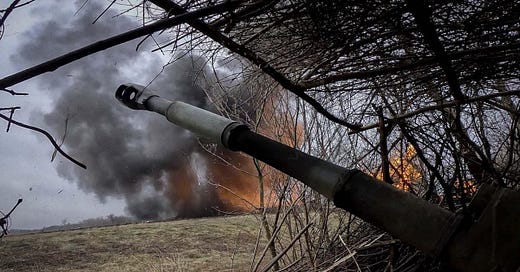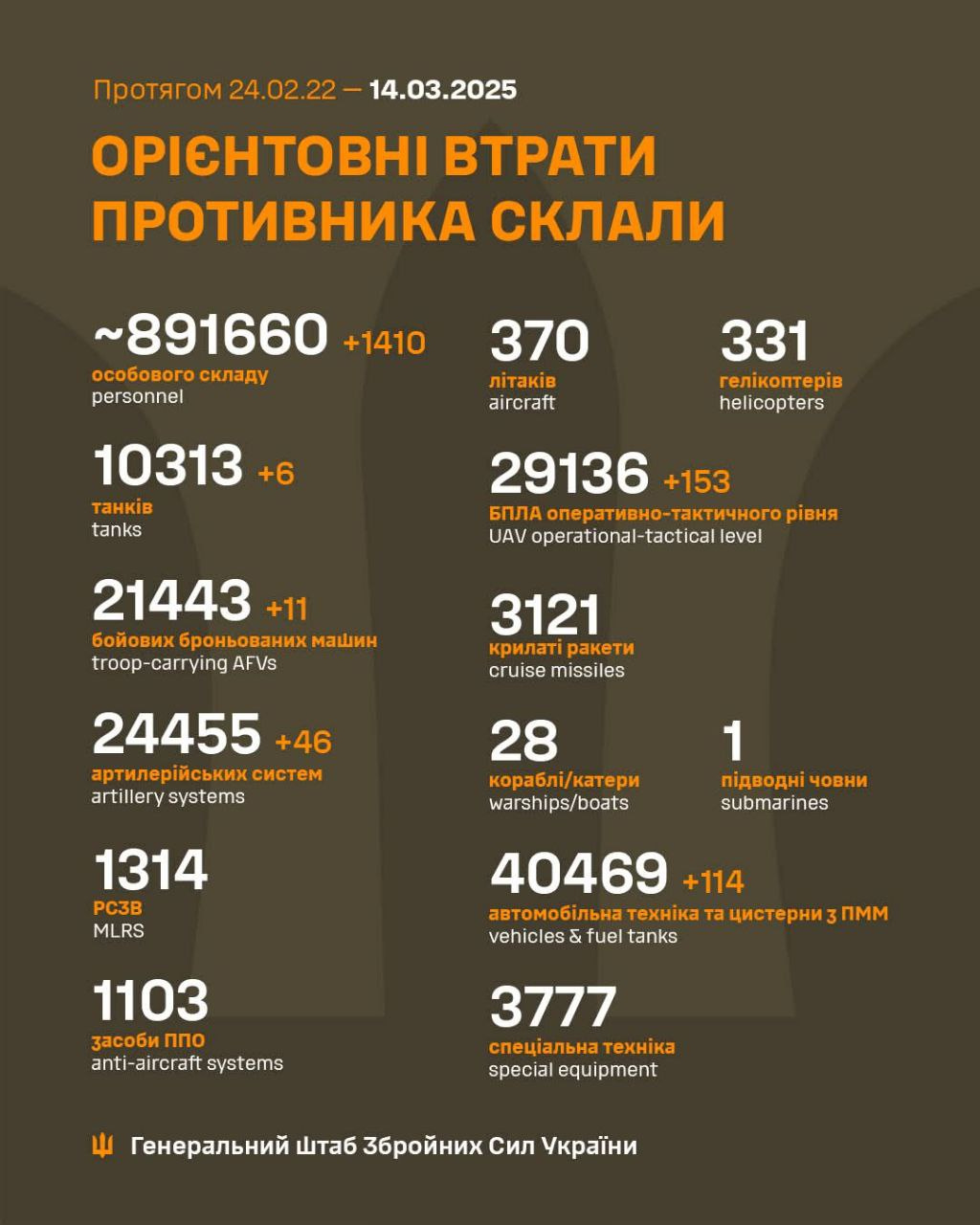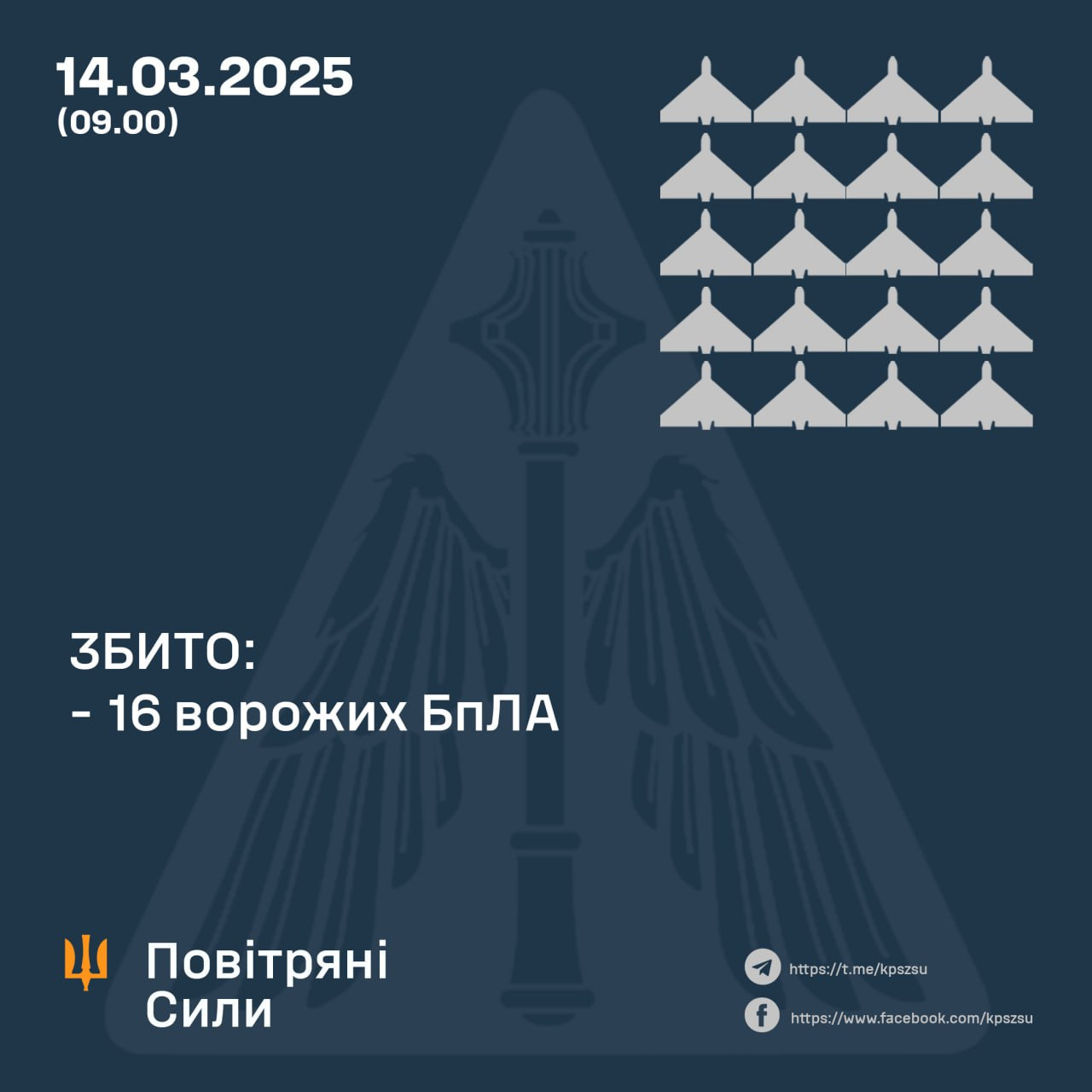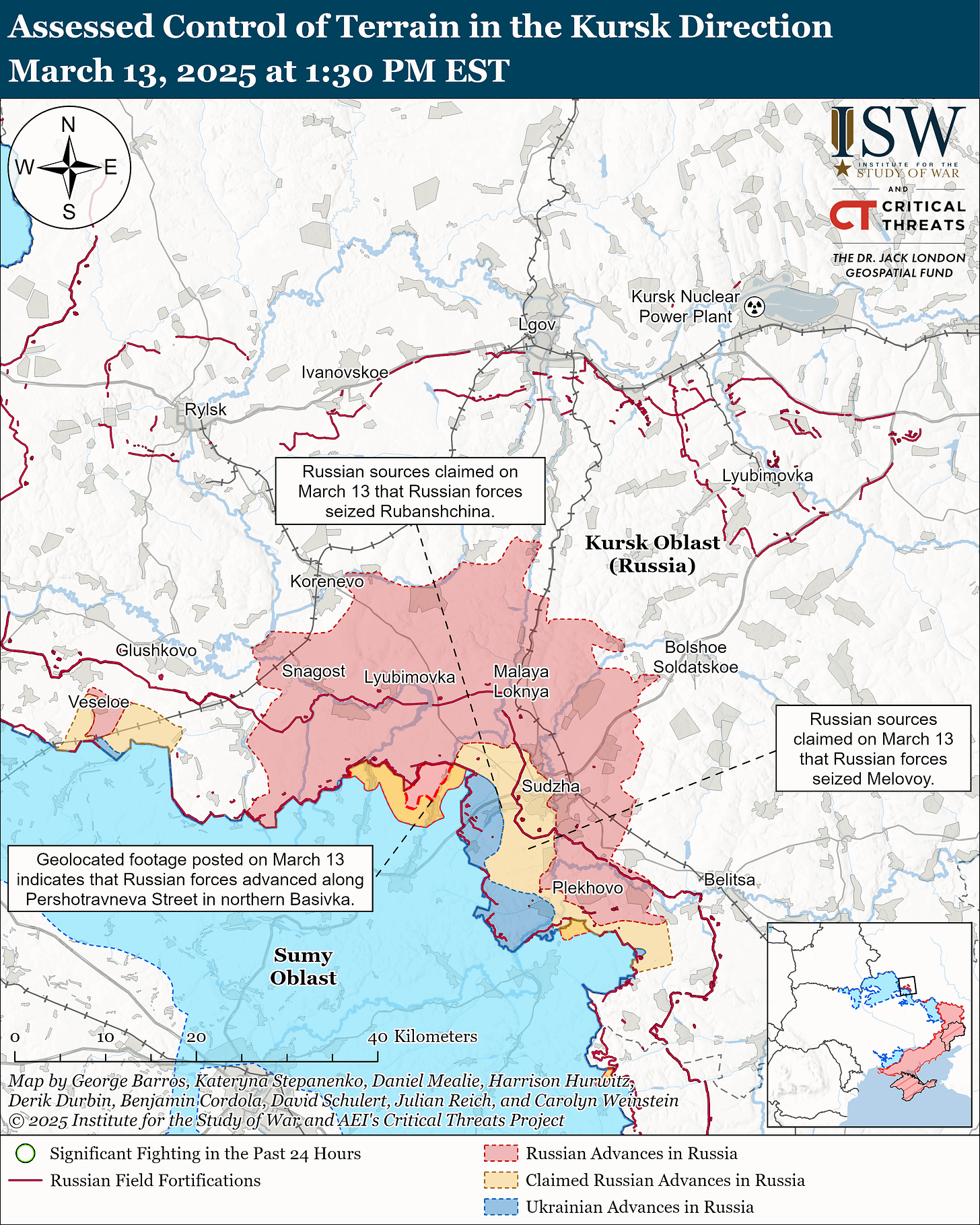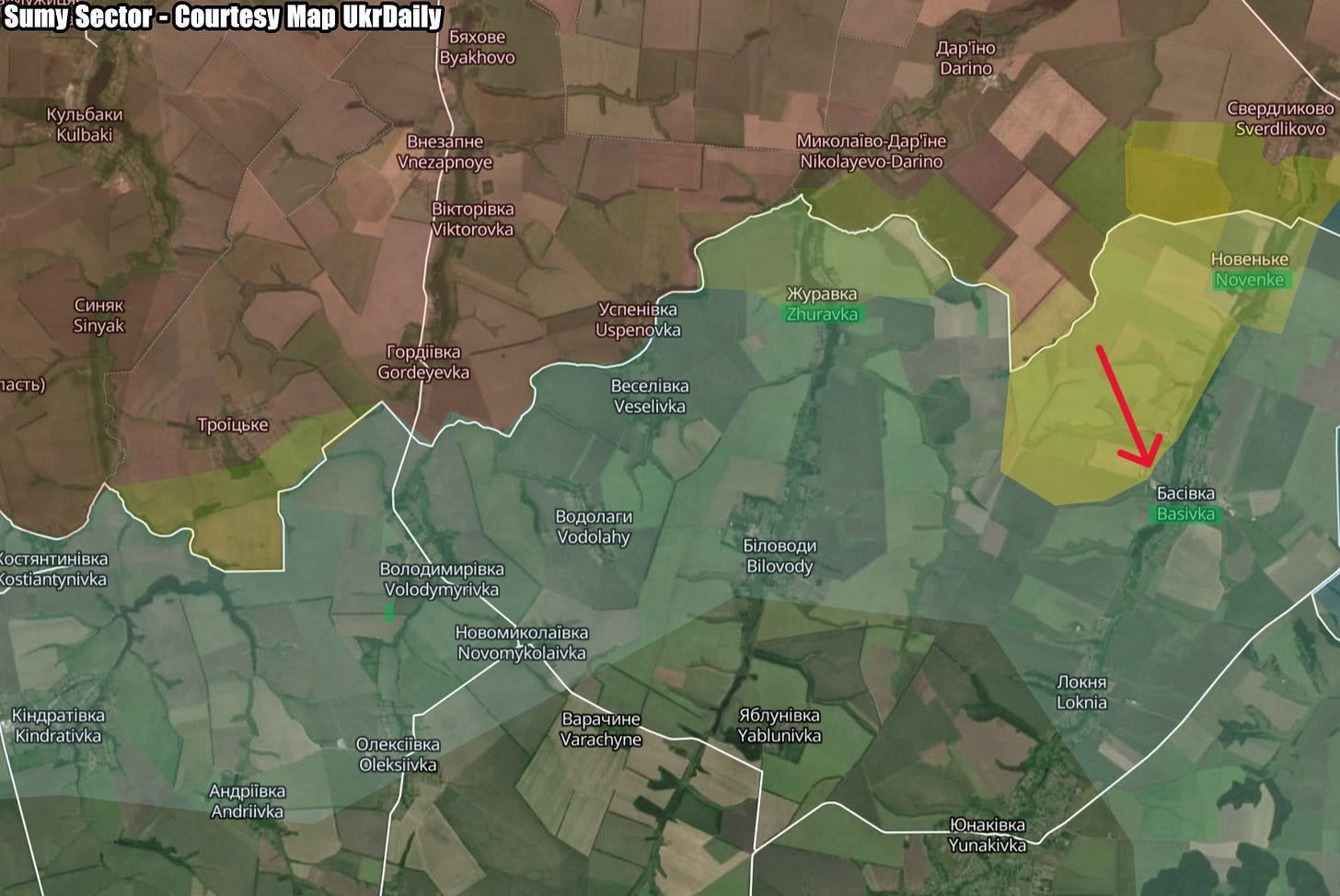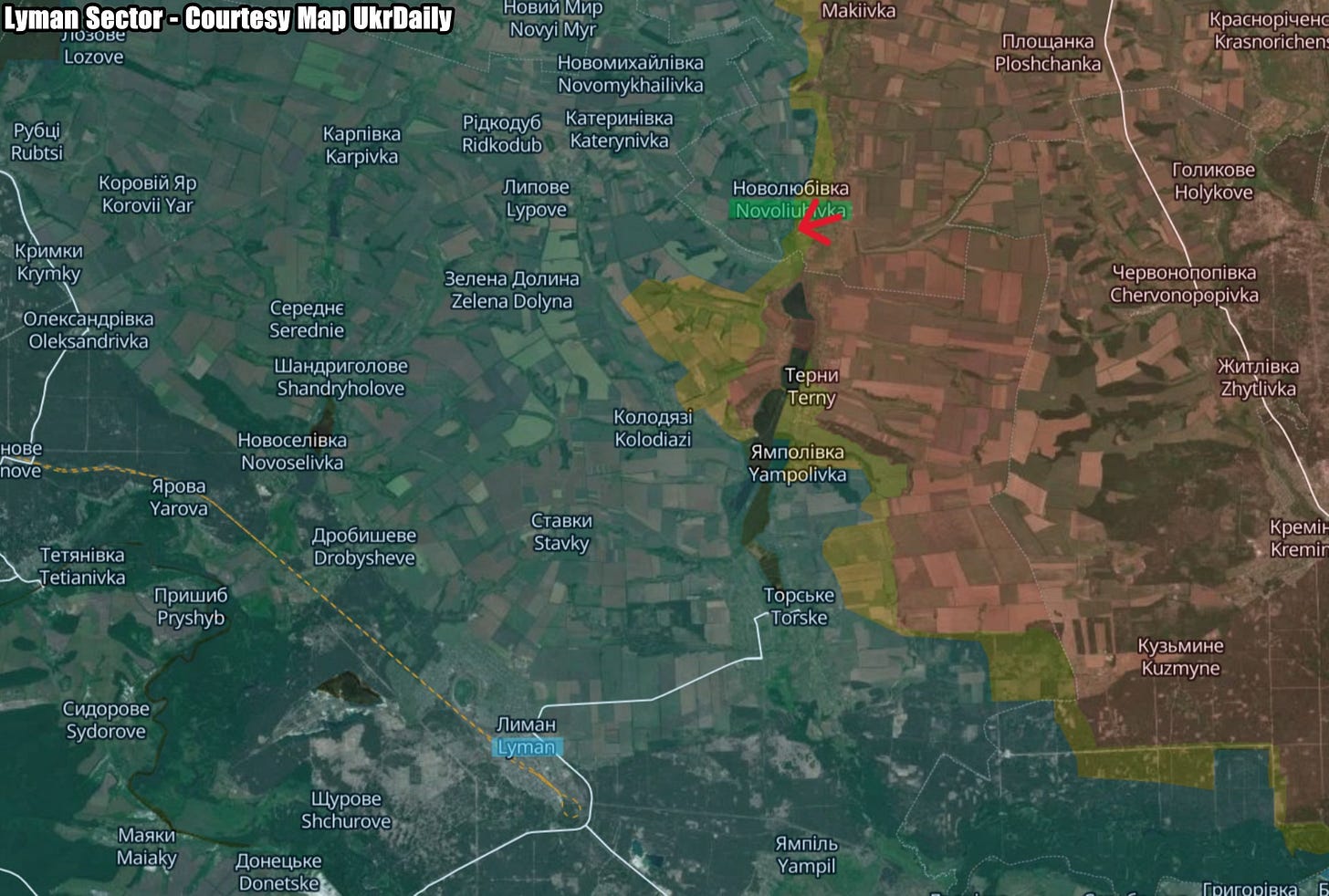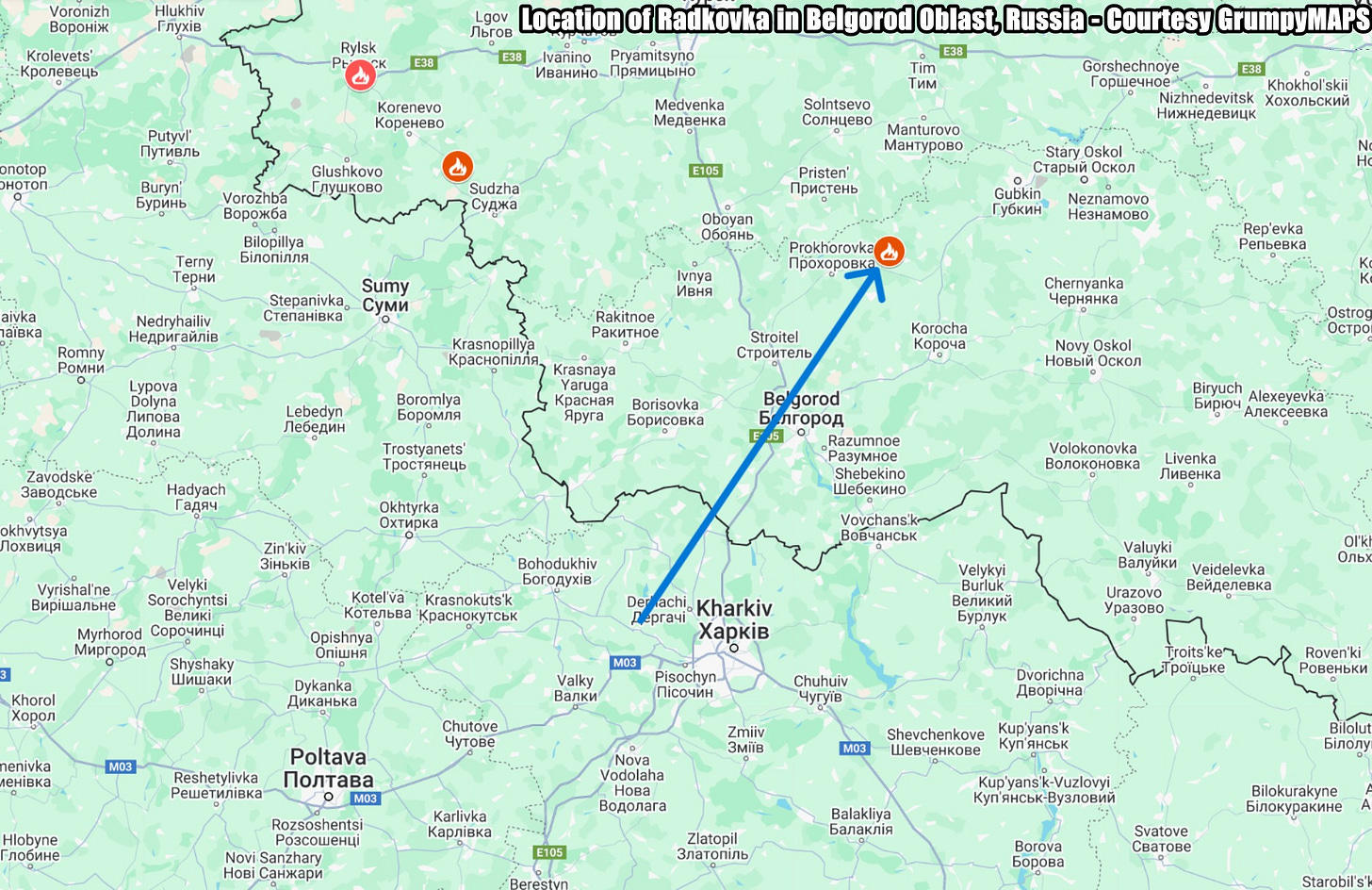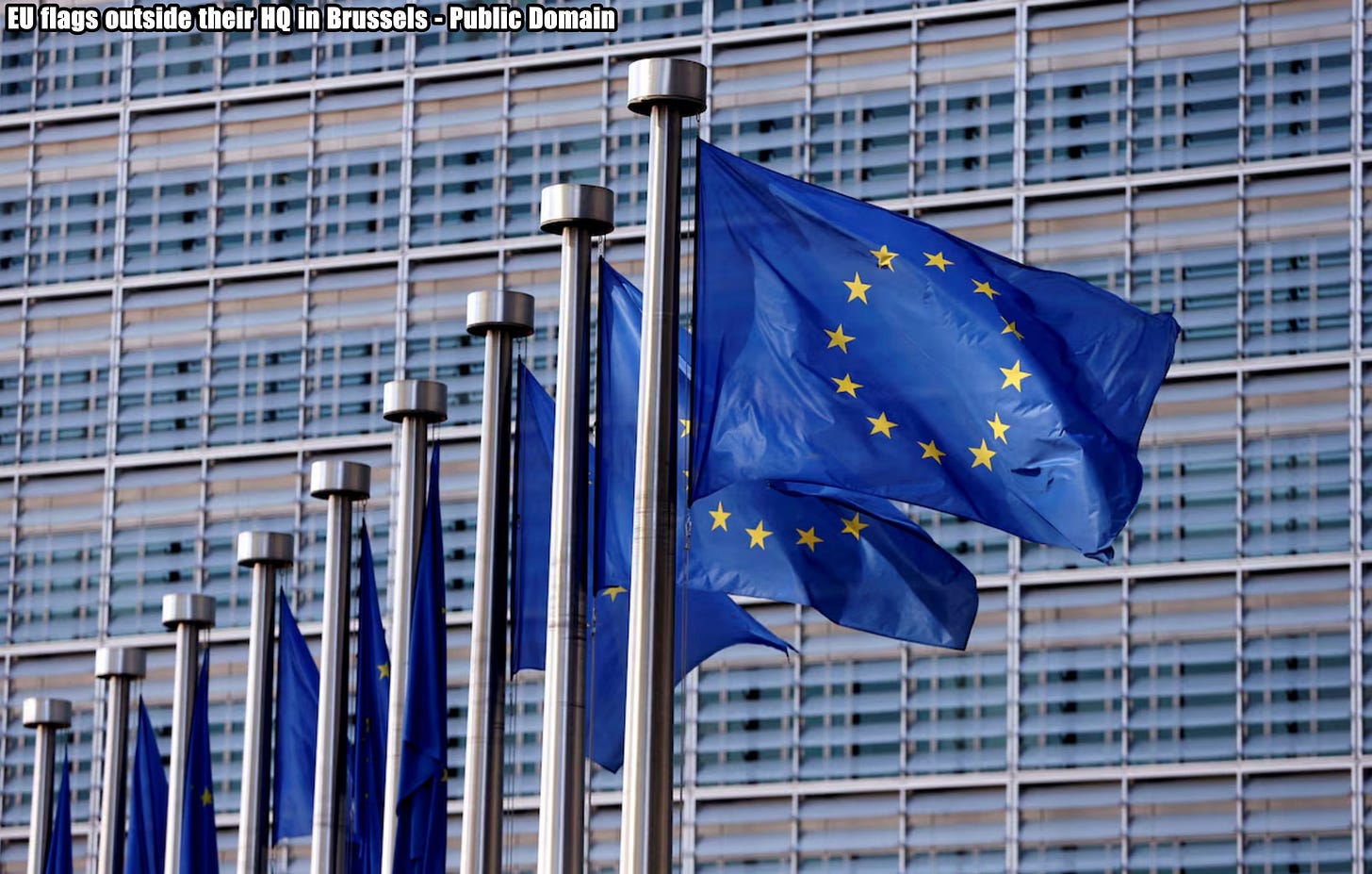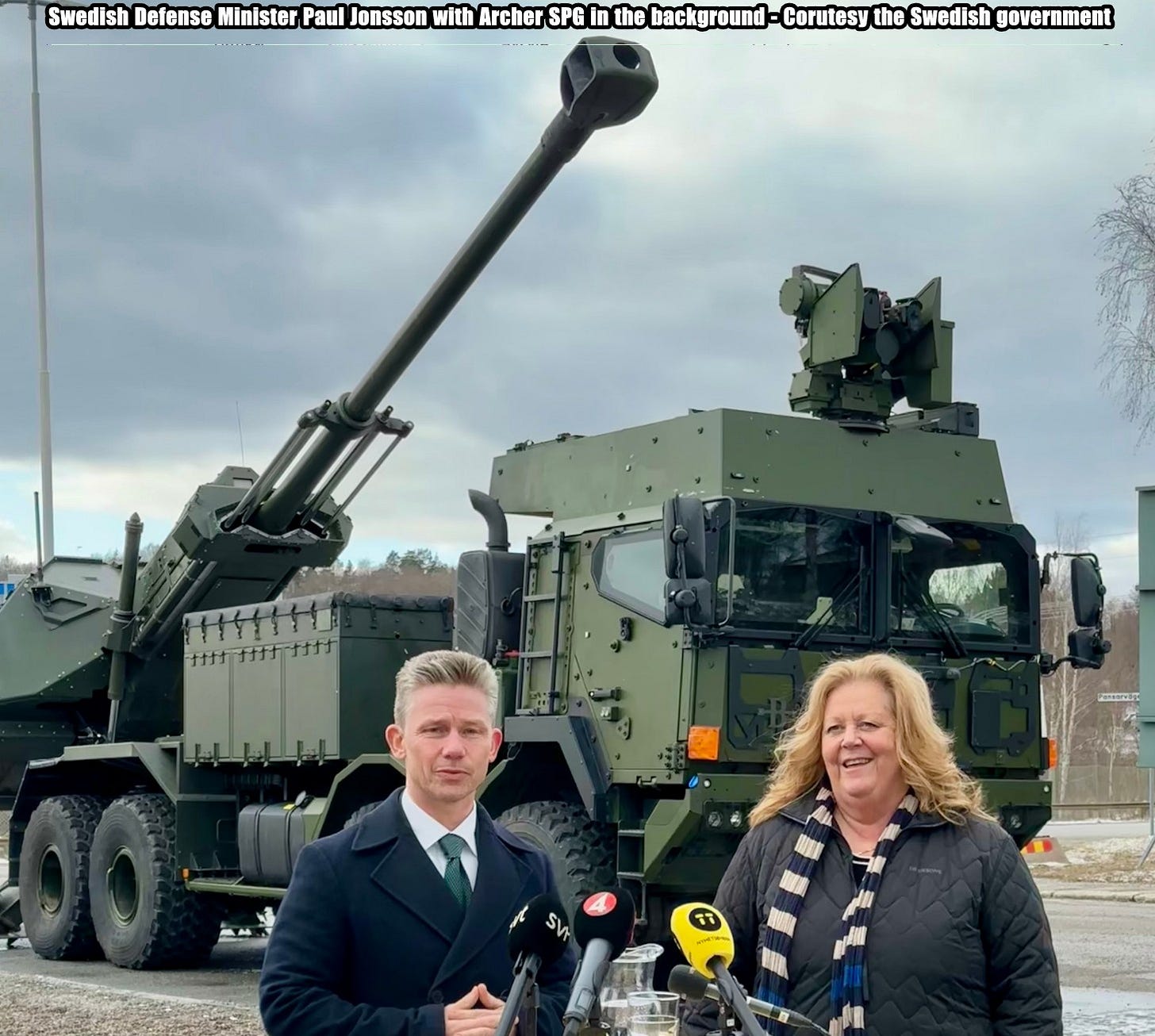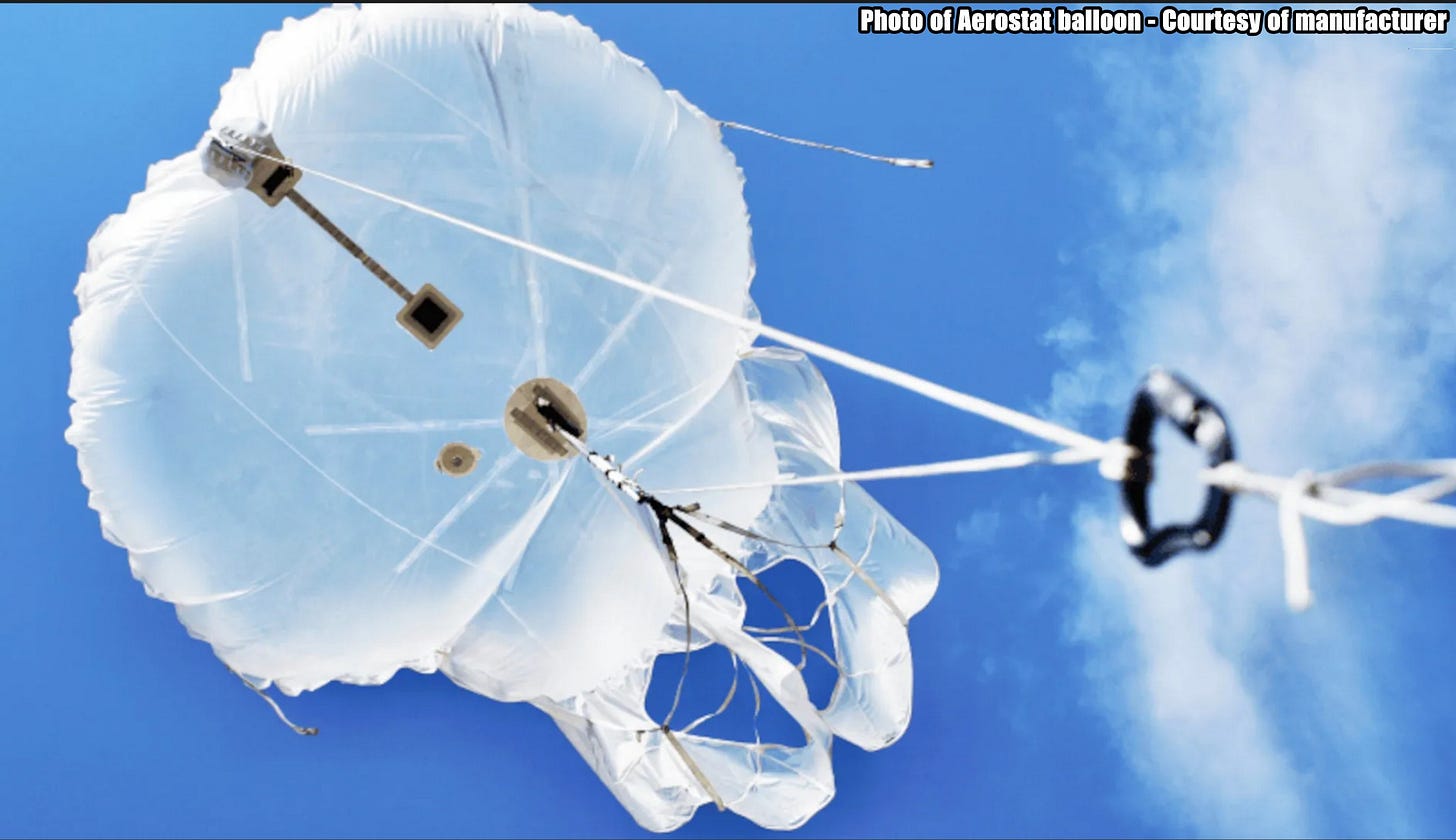Slava Ukraini! In early 2022 I began a Telegram channel aggregating news from a number of sources daily on the war in Ukraine. In June 2023 I began providing a daily draft for the Ukraine War Brief Podcast collecting news from over 70 sources daily, which formed the basis of the script. While the Podcast no longer exists I have continued to make this Brief available for my followers here on Substack for those who wish to keep up with the news from the war.
All the latest news on the Russo-Ukraine War 6 days per week
ALONG THE CONTACT LINE
GSAFU Morning Report
For: Mar 14, 2025
The General Staff of the Armed Forces of Ukraine in its Operational Information update at 08:00 on Mar 14 stated that day 1115 of the full-scale invasion of the Russian Federation against Ukraine had begun.
The situation on the line of combat remains tense in some sectors. Ukrainian defenders continue to actively counteract the Russian aggressor, causing them significant losses in personnel, equipment and technology. Exhausting the enemy along the entire front line and continuing to disrupt the plans of Russian occupiers to advance deeper into the territory of Ukraine.
During the past day, 146 combat engagements took place.
Over the past 24 hours, the enemy carried out missile strikes,103 air strikes, used 2,509 drones and fired approximately artillery 6,000 shells across the positions of Ukrainian forces and civilians.
Air Force Daily Report
16 ENEMY UAVS SHOT DOWN, 9 SIMULATOR UAVS FAILED TO REACH THEIR TARGETS (LOCATIONALLY LOST)
➖➖➖➖➖➖➖➖➖
On the night of Mar 14, 2025 (from 8:00 p.m. on Mar 13), the enemy attacked with 27 Shahed attack UAVs and simulator drones of various types from the directions of Millerovo, Primorsko-Akhtarsk - Russia.
The air attack was repelled by mobile fire groups of the Air Force and the Defense Forces of Ukraine.
As of 09:00, the shooting down of 16 Shahed attack UAVs in Dnipropetrovsk, Zaporizhia, Donetsk and Kharkiv regions was confirmed.
9 enemy drone simulators were lost in location (without negative consequences).
The Kharkiv and Donetsk regions were affected by the Russian attack
Combat Operations in the Kursk Sector, Russian Federation
The Institute for the Study of War (ISW), a US based think tank, in its Mar 13 Russian Offensive Campaign Assessment reported that Russian forces continue to clear Ukrainian forces from Sudzha and its environs as Russian troops advance closer to the border in Kursk Oblast slowed on Mar 13 compared to recent days.
Ukrainian Commander-in-Chief General Oleksandr Syrskyi stated on Mar 12 that he ordered Ukrainian forces to withdraw from some unspecified positions within the Kursk salient and move to more advantageous defensive positions in Kursk Oblast in order to save Ukrainian lives.
The Russian Ministry of Defense's (MoD) Main Military-Political Directorate Deputy Head and Akhmat Spetsnaz Commander, Major General Apti Alaudinov, claimed that Russian forces seized and cleared Sudzha and are attacking the remaining settlements along the international border.
A Russian milblogger continued to claim that renewed Ukrainian HIMARS strikes are slowing the rate of Russian advances south of Sudzha. Drone operators from the "Rubikon" Center for Advanced Unmanned Technologies are reportedly operating near Sudzha
The Khortytsia operational-strategic group
(Responsible for the northeastern part of Ukraine. )
Sumy Sector: Russian forces also marginally advanced in northern Sumy Oblast.
Geolocated footage published on Mar 12 indicates that Russian forces advanced northwest of Basivka (northeast of Sumy City).
Syrskyi stated that Russian airborne (VDV) and Spetsnaz forces are attacking along the international border and attempting to advance further into Sumy Oblast. Ukraine's State Border Service Spokesperson Andriy Demchenko stated on Mar 12 that Russian forces are attempting to interdict Ukrainian ground lines of communication (GLOCs) along the international border near Novenke (northeast of Sumy City).
A Ukrainian source affiliated with Ukrainian military intelligence stated on March 13 that Russian forces are using all-terrain vehicles (ATVs) in northern Sumy Oblast and are attempting to leverage their manpower advantage to advance in the area.
Russian milbloggers claimed that Ukrainian forces are counterattacking near Zhuravka, Basivka, and Novenke (all northeast of Sumy City).
Lyman Sector: Russian forces recently advanced in the Lyman direction.
Assessed Russian advances: Geolocated footage published on Mar 13 indicates that Russian forces recently advanced in southern Novolyubivka (northeast of Lyman).
Siversk Sector: Russian forces recently advanced in the Siversk direction.
Geolocated footage published on Mar 12 indicates that Russian forces recently advanced to the T-0513 Siversk-Bakhmut highway northwest of Sakko i Vantsetti (southeast of Siversk).
Additional geolocated footage published on Mar 13 indicates that Russian forces recently advanced to eastern Vasyukivka (west of Sakko i Vantsetti).
Toretsk Sector: Russian forces recently advanced in the Toretsk direction.
Geolocated footage published on March 13 indicates that Russian forces recently advanced along Mykhaila Hrushevskoho Street in northern Toretsk
The Tavria operational-strategic group
(Responsible for the central-eastern and southeastern part of Ukraine.)
Pokrovsk Sector : Ukrainian forces recently advanced in the Pokrovsk direction.
Geolocated footage published on Mar 11 and 13 indicates that Ukrainian forces recently advanced to the southern outskirts of Shevchenko (south of Pokrovsk) and have seized most of the settlement. ISW cannot confirm that Ukrainian forces have entirely liberated Shevchenko at this time, however.
The Odesa operational-strategic group
(Responsible for Kherson, Qırım, (also known as Crimea) and the Black Sea.)
There have been no major changes to the combat environment since our last report.
TEMPORARILY OCCUPIED TERRITORIES
Nothing major to report.
THE HOME FRONT
Activist Demyan Hanul killed in Odesa, the perpetrator still at large.
Activist Demyan Hanul was shot and killed in central Odesa, with Ukrainian MP Oleksii Honcharenko first reporting the incident, later confirmed by the National Police on Mar 14, New Voice reported.
Demyan Hanul, 31, was a Ukrainian public figure, volunteer, blogger, and animal and environmental activist.
He was the founder and head of the NGO Street Front, and a participant in the Revolution of Dignity and the May 2nd standoff in Odesa against pro-Russian forces. He also led the Right Sector cell in Odesa from 2014 to 2016.
Hanul had expressed concerns about his safety, especially after previous threats and an attempted attack in May 2023.
Hanul’s father, an ATO veteran and participant in the Revolution of Dignity, served in the defense of Kyiv and later in the 28th separate mechanized brigade.
Demyan had been supporting the Armed Forces of Ukraine as a volunteer since the start of Russia’s full-scale invasion and was a trained history teacher.
As of now, authorities are investigating his murder, which took place on March 13 in the center of Odesa.
The National Police are working to identify the shooter, who fled the scene after the attack. Hanul was reportedly fatally shot in the head.
Investigators have opened a case under the charge of premeditated murder, and the shooter is believed to have targeted Hanul on order.
Police are working to track down the suspect. In a recent statement, Klymenko clarified that the shooter was not wearing military clothing, contrary to earlier reports.
RUSSIAN WORLD
Ukrainian drones strike Russian gas facilities, air defense missile depot.
Ukrainian drones reportedly struck two gas compressor stations and a warehouse storing missiles for Russia's S-300/S-400 air defense systems, the Kyiv Independent reported on Mar 14, citing a security source.
The long-range drones targeted gas compressor stations in Russia's Tambov and Saratov oblasts, according to the source.
Another strike reportedly hit a missile depot near the village of Radkovka in Belgorod Oblast, triggering a detonation of stored ammunition.
"Ukraine conducted another successful special operation on enemy territory, causing significant damage to Russia's budget and reducing its ability to finance and sustain the war," the source said.
RELATED INTERNATIONAL NEWS
EU votes to renew Russian sanctions.
The European Union agreed on Friday to renew sanctions on Russian individuals and entities but kept Russian tycoon Mikhail Fridman on the list despite pressure from Hungary, Reuters reports citing EU diplomats.
EU sanctions must be renewed every six months in a unanimous vote by the 27 member states' ambassadors to Brussels. The deadline for renewal was Saturday and the list has now been renewed until Sep 15.
Hungary, which has maintained cordial ties with Moscow despite the Ukraine war, had threatened to block the renewal unless certain individuals were delisted.
Two diplomats said Budapest had initially asked for nine names to be removed from the list, including Fridman's, but the other envoys managed to reduce the number to three Russians.
They are Gulbakhor Ismailova, who is the sister of prominent businessman Alisher Usmanov, businessman Viatcheslav Moshe Kantor and Russian sports minister Mikhail Degtyarev.
A fourth, businessman Vladimir Rashevsky, was removed due to a weak legal case rather than pressure from Budapest.Three others were removed from the list because they have died.
The EU has more than 2,400 individuals and entities on its Russia sanctions list.
Putin rejects US ceasefire proposal - offers alternative that reflects his maximalist goals.
The Institute for the Study of War (ISW), a US based think tank, in its Mar 13 Russian Offensive Campaign Assessment reported that Russian President Vladimir Putin rejected the ceasefire proposal that the United States and Ukraine recently agreed upon in Jeddah, Saudi Arabia and offered an alternative proposal that undermines US President Donald Trump's stated goal of securing a lasting peace in Ukraine. Putin claimed on Mar 13 that he "agrees" with the temporary ceasefire proposal and that the "idea itself is correct" but that the cessation of hostilities "should be such that it would lead to long-term peace and eliminate the initial causes" of the war.
Putin thus rejected one of the main principles of the US-Ukrainian proposal — that the temporary ceasefire precede formal negotiations to end the war. Putin also claimed that there are questions that "require painstaking research from both sides." Putin questioned several aspects of the US-Ukrainian temporary ceasefire proposal. Putin asked what would happen to the remaining Ukrainian salient in Kursk Oblast and whether Ukraine would be allowed to continue to mobilize forces, train newly mobilized soldiers, and receive military aid from its partners and allies. Putin questioned the control and verification measures of a temporary ceasefire and who would give the orders to stop fighting.
Putin suggested that he may call President Trump to discuss the "issues" involved in the ceasefire proposal. Putin postured military strength during his rejection of the ceasefire proposal, highlighting recent Russian successes in pushing Ukrainian forces out of Kursk Oblast and claiming that Russian forces are advancing in "almost all areas of combat."
Putin's rejection of the ceasefire is consistent with Mar 12 reports from Russian insider sources about the Kremlin's likely response to the proposal. Bloomberg reported on March 12 that sources familiar with the Kremlin's thinking and the situation stated that Putin will "stretch the timeline" for agreeing to the temporary ceasefire in order to ensure that his stipulations "are taken into account."
A source close to the Kremlin stated that Russia may demand a halt to weapons supplies to Ukraine as a condition of the temporary ceasefire. Russian opposition outlet Verstka reported on Mar 12 that a source close to the Russian Presidential Administration stated that the Kremlin would "formally" give a "positive response" to the temporary ceasefire proposal but would also demand "impossible conditions" to which Ukraine cannot agree. The source stated that Putin wants to remove Ukraine from talks so that Russia can engage in negotiations with the United States alone while also "correcting the situation on the front" to strengthen Russia's negotiating position.
ISW assessed on Mar 12 that these Russian insider source leaks may have been intentional and part of a Russian negotiating strategy that aims to push the United States to renegotiate its deal with Ukraine on the temporary ceasefire. Putin's response to the ceasefire offer suggests that they may also have been at least partially accurate.
Putin is offering an alternative ceasefire agreement that is contrary to the intentions and goals of the US-Ukrainian ceasefire proposal.
The US-Ukrainian ceasefire proposal calls for a renewable 30-day cessation of combat operations along the entire frontline, a moratorium on long-range missile and drone strikes, and a cessation of operations in the Black Sea. The proposal allows for Russia and Ukraine to extend the ceasefire and assumes the continuation of US intelligence sharing and US and other military assistance to Ukraine. The US-Ukrainian ceasefire proposal was explicitly aimed at allowing Russia and Ukraine to demonstrate their willingness to make peace and separates the temporary ceasefire from future negotiations to end the war.
Putin's envisioned ceasefire agreement would grant Russia greatly disproportionate advantages and set conditions for the Kremlin to renew hostilities on terms extremely favorable to Russia. Putin's envisioned ceasefire agreement would likely require the United States and Ukraine's other supporters to pause military assistance to Ukraine and require Ukraine to stop recruiting and training personnel. Such a ceasefire agreement would begin to disarm Ukraine if renewed for a long period of time by preventing its military from reconstituting, training, and equipping itself and would cause Ukraine and the West to surrender significant leverage to Russia. Putin did not suggest that Russia would also cease military recruitment efforts, the production of military equipment, and the receipt of military aid from Russia's allies.
Russia's ability to continue these measures during a potential ceasefire while preventing Ukraine from doing so would allow Russia to resume offensive operations with better manned and equipped units at a time of its choosing. Russian forces are currently on the offensive across the theater, as Putin observed, so demands that would prevent Ukrainian forces from reconstituting can only be intended to preserve or enhance Russia's ability to resume the offensive at a later date. Such demands would seem a clear indication that Putin is not, in fact, committed to making peace.
Putin's attempts to introduce a new ceasefire agreement on terms that asymmetrically benefit Russia ignore Trump's stated intention that the ceasefire set conditions for negotiations toward a more comprehensive peace agreement in the future. An agreement along the lines Putin appears to be offering would undermine the Trump administration's stated objective of bringing about a sustainable peace in Ukraine, would reinforce Putin's belief that Russia can militarily defeat Ukraine, and would incentivize Putin to resume military operations against Ukraine rather than making any concessions in formal negotiations to end the war.
Finland sentences Russian neo-Nazi mercenary Yan Petrovsky to life for war crimes in Ukraine.
The Helsinki District Court sentenced Russian neo-Nazi mercenary Yan Petrovsky to life in prison for war crimes committed in Ukraine, Finnish public broadcaster Yle reported on March 14.
Petrovsky, co-leader of the Rusich paramilitary unit, was convicted of war crimes in Luhansk Oblast on Sept. 5, 2014, during Russia's invasion of Donbas. Prosecutors presented video evidence showing him ordering and participating in the execution of Ukrainian soldiers.
Petrovsky denied all accusations, but the court ruled that the video recordings provided sufficient proof of his involvement. Rusich, a notorious Russian neo-Nazi group, has documented and published evidence of its own war crimes, including torture and extrajudicial killings.
One of the five charges against him was dismissed. Ukraine had requested Petrovsky's extradition, but a Finnish court ruled on Dec. 8, 2023, that he could not be sent to Ukraine, citing concerns over prison conditions under the European Convention on Human Rights.
The Rusich unit, linked to Russia's Wagner Group, has a long history of brutality. Co-founder Alexey Milchakov gained notoriety for publishing images of animal cruelty and openly celebrating war crimes.
Petrovsky has been under EU and U.S. sanctions since 2022.
MILITARY & TECH
Sweden prepares new weapons package for Ukraine.
Sweden has finalized a deal to produce and supply 18 Archer self-propelled artillery systems and 5 ARTHUR counter-battery radars to Ukraine, Defense Express reported citing an announcement by Swedish Defense Minister Paul Jonsson.
The agreement, valued at approximately $300 million, is part of the 18th package of military aid to Ukraine.
"Sweden has previously donated 8 Archer systems to Ukraine. They are appreciated by and have done a good job at the front in delivering damage to the Russian occupiers. With a combination of speed, precision and mobility, Archers are a formidable weapon in Ukraine," Jonsson remarked.
He also expressed optimism that the new artillery and radar systems will enhance the capabilities of the Ukrainian Defense Forces and increase Russian casualties.
"Open sources suggest that Russia has lost over 437 towed artillery pieces, 869 self-propelled systems, and 451 multiple-launch rocket systems (MLRS). This Swedish artillery package will hopefully boost those numbers further,” Swedish Defense Minister stated.
In addition, Jonsson confirmed Sweden’s participation in the Artillery Coalition, an initiative designed to streamline the supply of modern artillery systems, ammunition, and training for Ukrainian forces.
The coalition’s long-term objective is to bolster Ukraine’s artillery capabilities and improve its interoperability with NATO.
Ukraine’s new balloon-mounted drones use infrared sensors to spot and destroy Russian Shaheds.
Ukrainian forces have developed a new aerial defense system using tethered balloons as platforms for launching interceptor drones against incoming threats, according to images circulating on social media platforms, The War Zone reports.
By elevating interceptor drones with aerostats, Ukraine gains a strategic edge—detecting and engaging Russian Shaheds earlier than ground-based systems allow.
The system, mounted on balloons produced by Ukrainian startup Aerobavovna, appears designed to detect incoming Russian long-range kamikaze drones using infrared cameras before launching counter-drones to intercept them, The War Zone reports.
Images show the current configuration includes a launcher for a single fixed-wing kamikaze “interceptor” drone and a sensor array suspended beneath the aerostat. The elevated position provides critical advantages for the early detection of threats.
“In general, elevating any sensor system helps provide a better line-of-sight field of view toward the horizon and improved ‘look-down’ coverage,” TWZ explains.
The aerostat appears to function as both a detection platform and a launch system, with infrared sensors mounted underneath the balloon to spot approaching threats. Aerobavovna currently advertises its aerostats for surveillance, communications, and as signal relays for first-person view (FPV) kamikaze drones, making this application an extension of their existing capabilities.
The use of various types of drones to try to intercept other uncrewed threats, as well as helicopters, has also become a commonplace feature of the ongoing fighting in Ukraine.
If the aerostat-mounted drone interceptor system works, it could offer a useful addition to Ukraine’s defensive arsenal that could be readily deployed across the country. It might also be possible to tie in the balloon-based systems with other Ukrainian counter-drone and air defense capabilities, such as the country’s low-cost acoustic sensor network consisting of thousands of microphones to detect incoming drones.
The interceptor-armed aerostats are also relatively low cost and low footprint, they could be even more valuable for supplementing the Ukrainian military’s other counter-drone capabilities and further reducing the strain on higher-end and prized air defense systems, especially those supplied by the West. Recent disruptions in U.S. military assistance have raised particular questions about Ukraine’s air defense capabilities and overall capacity in the absence of such support.
Much remains to be learned about the counter-drone interceptor system utilizing the Aerobavovna aerostat. Its appearance does underscore the continually expanding efforts in Ukraine to address the very serious threats posed by kamikaze drones on and off the front lines.
Updated GLSDBs for HIMARS to Be Sent to Ukraine.
The United States is preparing to ship a new batch of long-range GLSDBs (Ground-Launched Small Diameter Bombs) for the M142 HIMARS and M270 MLRS missile systems to Ukraine. It should be noted that this is a combination of a jet engine from an M26 unguided rocket and a GBU-39/B SDB I precision glide bomb, with a maximum range of 150 km, Reuters reports.
For Boeing and Saab, transforming the GLSDB may be not only a matter of fulfilling the contract but also of protecting their reputation
Reuters reports on the successful work on the GLSDB, citing its sources and noting that the main drawback — the vulnerability of the satellite navigation system to electronic warfare — has been addressed. In addition, the internal elements of the ammunition were improved to increase its stability. This likely points to changes in the design of the special adapter between the engine and the bomb, which also appears to have had issues.
In recent weeks, 19 GLSDBs have been used and proved to be effective. A shipment of this ammunition is already in Europe, meaning it can be transferred to Ukraine very soon.
Defense Express stated that GLSDBs have become an example of a weapon whose expectations vastly exceeded its actual impact on the battlefield. Especially given that their transfer to Ukraine was announced back in February 2023 as part of a $2.175 billion aid package. At that time, GLSDBs were ordered under the USAID program, which involves ordering weapons directly from manufacturers.
They arrived in Ukraine in early 2024, a year later. In particular, the first wreckage of the GBU-39/B Small Diameter Bomb was shown by Russians in mid-February. In April, U.S. Deputy Secretary of Defense Bill LaPlante, while not directly naming the weapon, pointed to the GLSDB as an example of a system that failed on the battlefield.
The question that remains to be answered is what changes were made to the GBU-39/B SDB guidance system, as the installation of a new jamming-resistant satellite navigation system is only one possible solution. It should be understood that the principle of using the GLSDB, which involves ascending to a significant altitude, exposes it to electronic warfare (EW) for a considerable amount of time. This explains why the GLSDB is critically affected by electronic warfare, while the SDB from aircraft is less vulnerable.
Another option is to consider would be the concept of using the system and use the SDB with a semi-active laser guidance. This requires target illumination with a laser, for example, from a UAV. However, it is not easily suppressed by electronic warfare and allows for hitting moving targets. It should be understood that the entire effectiveness of the SDB, which weighs 129 kg, depends on the accuracy of the shot, which must be within a few meters.
That’s it for today’s Brief folks if you would like to keep up with events in Ukraine daily please consider subscribing, it’s free!


